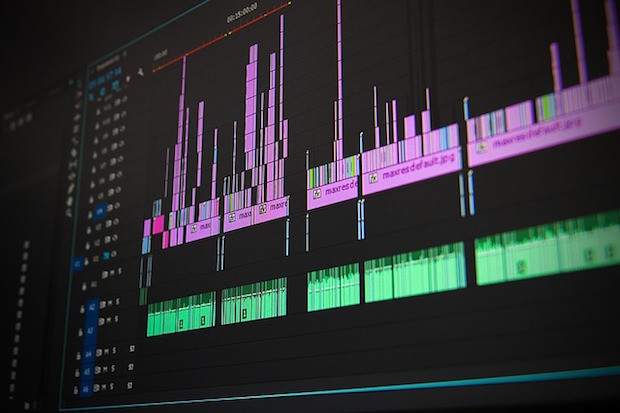Is online video the future of news? The answer depends on whether you ask publishers, platforms or audiences.
Some of the larger news organisations are adjusting their workflows to produce more videos, but for local publishers with fewer resources, even making the format part of their digital strategy can be challenging.
For Finegil, a group of 18 local and regional Italian titles, which has a central newsroom in Rome and is part of Gruppo Editoriale L'Espresso, the solution was to use Wochit, a paid-for platform that uses elements of automation to allow anyone to turn a text-based story into a video ready to be published online or on social media.
Its newsrooms vary in size, from some 60 journalists at regional papers to 15 reporters working for the local titles. But since Finegil newspapers started using Wochit heavily at the beginning of 2016, after a short initial period of training and experimentation, at least four people in each newsroom have become regularly involved in video production.
The network is now able to collectively produce roughly 250 videos every month – the smaller newsrooms average two videos per day, while the number goes up to ten for some of the bigger titles.
Andrea Iannuzzi, executive editor of AGL (Finegil G'ELocal), told Journalism.co.uk that "it wasn't easy to have a video strategy" before.
The titles were mostly relying on videos produced by the group's central visuals desk in Rome, which prioritised national and international issues for La Repubblica.
"We think this type of platform works better for social video formats, because you just have to choose the right story and images and overlay text, sounds or other visual elements.
"We mostly try to do short, one-minute videos, and they work better on social than they do on the web, even though they can also work online in the case of breaking news."
The network has mostly focused on finding and developing social video formats, particularly for Facebook, and has found videos that summarise the news of the day, explanatory videos, listicles and animated photo galleries have had the most success.
For example, Il Tirreno, Finegil's largest publication, produced 2.5 times more videos four months into using Wochit, with the average video generating 369 per cent more engagement on Facebook than before. Likes have increased by 506 per cent, and the number of average shares per video has gone up by 844 per cent, to 1.1k shares.
The stories that would benefit from being adapted to a video format for each title are decided on a case by case basis during the morning editorial meeting, and the pieces are also shared on the network's collective social presence on Facebook, La Cronaca Italiana, every late afternoon.
"For local news, the best videos are the ones that have an emotional impact on the community.
"It can be good stories or negative situations that could set an example for other people, but you have to stay very focused on emotions and the issues in these communities.
"With the recent earthquake that happened in Italy, the videos we produced had an impact not only because of how powerful the images were, but because we were able to place the right text and the right sequence of images and not show only the negative aspects of that tragedy."
Wochit allows journalists to produce videos by uploading their own footage and materials, or make use of the platform's library of content from different agencies, such as Reuters, Associated Press or Getty Images.
Iannuzzi said Finegil's approach is a mix of the two – local newsrooms mostly use their own material, but there are also cases when Wochit infographics or footage of international news are used for some video formats, such as the daily 'day in one minute' round-up of global issues produced by the group.
"Usually we have the story first and then we think about the video, even when there's breaking news or things such as a town hall event.
"What we wanted to do was to create videos from our existing stories and one of the best ways has been to turn a photo gallery into a video.
"We are now trying to become more skilled in the production of infographics to embed in the videos, to explain things such as law changes and political or economic issues to our readers."
He said the main challenge has been "sharing the knowledge with the newsroom" and integrating video production into the "natural daily workflow" of the titles, which is why training on the platform started in small teams before expanding into two-day workshops with editors and journalists, where they had to get hands-on with the tool.
"It's about keeping people updated and focused on the fact that news is not only text, especially during these times, it's also video.
"And you need to have the right idea, because a good platform won't be that useful if you don't have the right journalistic skills."
Free daily newsletter
If you like our news and feature articles, you can sign up to receive our free daily (Mon-Fri) email newsletter (mobile friendly).
Related articles
- Protecting independent journalism, with Lexie Kirkconnell-Kawana of IMPRESS
- Five key takeaways from the UK select committee on the future of news
- The first UK local news publisher gains charitable status
- New app uses geolocation to help local publishers boost ad revenue
- How MyLocal Lincolnshire and Ping! are innovating local media










